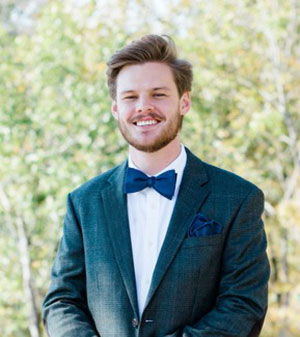D.M.D./Ph.D. UAB dental student Caris Smith encourages others to explore a different side of dentistry.
 Caris SmithFor Caris Smith, the University of Alabama at Birmingham School of Dentistry is more than just a training ground for becoming a practicing dentist. It also is a powerful research engine.
Caris SmithFor Caris Smith, the University of Alabama at Birmingham School of Dentistry is more than just a training ground for becoming a practicing dentist. It also is a powerful research engine.
Having progressed through his Ph.D. coursework and joined the D.M.D Class of 2027, Smith is delving deeply into both sides of dentistry. From a practice standpoint, he is working toward a career as an academic oral and maxillofacial surgeon. But Smith also is heavily involved with the National Student Research Group (NSRG), which is part of the American Association for Dental, Oral and Craniofacial Research.
“I want to try to show other students that not only is research essential, but it actually can be fun,” Smith says. “Even if they go into private practice, they still need to be up-to-date on the research, and know how to take care of patients in the most effective and evidence-based way possible.”
A native of Mobile, Smith says he has long been interested in pursuing a career as a surgeon. He became particularly intrigued with oral and maxillofacial surgery after undergoing jaw surgery while in high school.
“I spent some time with my surgeon, learning from him and the anesthesia team as well, and just fell in love with it,” Smith says.
After graduating from The University of Alabama in 2019 with a degree in chemistry, Smith enrolled in the UAB SOD partly because his wife, Laura-Katherine Smith, was a graduate student at UAB (she currently works as an occupational therapist at UAB Hospital). But he also was impressed by the vast research and outstanding clinical opportunities available at the UAB SOD.
“The research rigor and the clinical exposure you get at UAB is unparalleled,” Smith says. “We have a Level 1 trauma center here, so you see an enormous number of patients and diverse medical conditions. Once you go through that, you come out the other side ready for anything.”
Smith is working to further enhance his preparation through involvement with the NSRG. As president of the UAB SRG chapter, Vice President of the National SRG, Government Affairs Liaison and Gert Quigley Fellow, and former Southeast Regional Representative, Smith helps organize research seminars, training workshops, and other events. He says he also is making important connections with dental and medical researchers from throughout the country as well as advocating on Capitol Hill for congressional offices to implement policy changes related to research and health.
“It’s basically a constant networking event,” Smith says. “You meet all these people who are there to push research forward and advance the field. You get to know them and their program structures. We see what works best, how to be more efficient, and how we can increase collaboration. It creates a lot of opportunities to meet different people, and share your science and your story.”
At UAB, Smith is working with SOD professorAmjad Javed, Ph.D.. Javed points out that less than 2% of D.M.D. students also pursue a Ph.D., as Smith is doing. Javed says such dual degree tracks are essential to prepare a new generation of dentists who can be both clinicians and research scientists.
“I’ve learned all that I have because somebody else did the research and made the discoveries and provided the evidence of what worked and what didn’t work,” Javed says. “For us to sustain as a field, it has to be evidence-based dentistry, and that evidence comes from research.
“The NSRG helps us in terms of preparing future dentists to be critical thinkers, so they can provide the best evidence for the quality and most cost-effective care for their patients. We have to develop the clinical thinkers for tomorrow, not for today. The NSRG is a conduit to engaging the next generation and bringing them into science and into the clinic. We want to identify the leaders of tomorrow early, and then nurture them.”
Smith says UAB is an ideal place for such nurturing to take place because of the collaborative atmosphere that permeates throughout the university.
“While I’m housed at the School of Dentistry and do most of my research here, there also are faculty members working in different fields who are very helpful,” Smith says. “I moonlight in one lab that does immunology and leukemia work because a lot of the techniques they use can be applied to my current work and my long-term scientific interests.”
“There are lots of very helpful faculty here who want to mentor and teach you. They take the time to help you learn and get the training you need so you can be an independent investigator down the road. There’s a lot of strong teamwork.”
Smith says he is glad to contribute to that effort through his work with the NSRG, as well as basic day-to-day interactions with other students.
“Some of the undergrads who come through that want to go to dental school don’t really know how research fits into dentistry,” Smith says. “It’s nice to be able to mentor them and show them that are lots of different options besides the traditional route of becoming a private practice general dentist. There is a smorgasbord of research options for them to choose from. They just have to find what they like.”